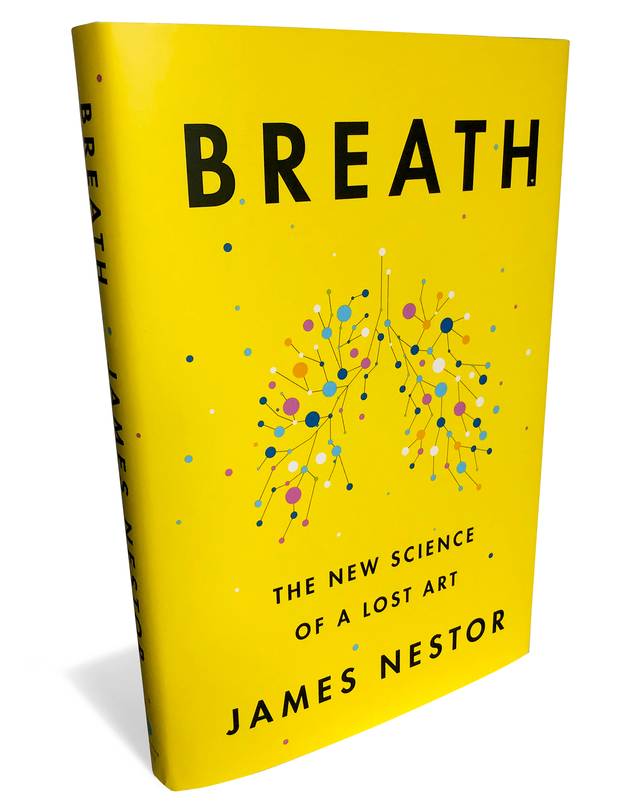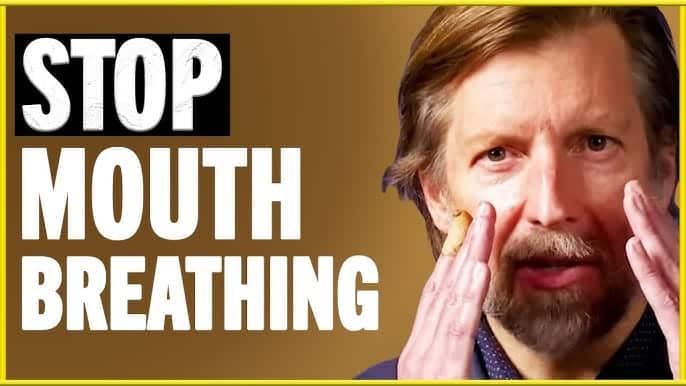Wondering about Crossfit and Breath? If you’re into CrossFit, you already know how critical proper breathing is to performance. But like many, I didn’t fully appreciate its impact until I read James Nestor’s book Breath: The New Science of a Lost Art. This book has profoundly changed the way I think about breathing—not just in daily life, but especially during CrossFit workouts. The book dives deep into breathing mechanics, ancient practices, and cutting-edge science, showing how essential this often-overlooked element is to overall health and athletic performance.
In CrossFit, where efficiency and intensity matter, mastering your breath can be the difference between hitting a new PR or gassing out early. Let’s dive into how Breath applies to CrossFit and what you can learn to take your performance to the next level.
Table of Contents
The Importance of Breathing in CrossFit
CrossFit and breathing go hand in hand. Whether you’re lifting heavy, sprinting, or cycling through an AMRAP, every breath you take has a direct effect on your performance. Breathing impacts your stamina, focus, strength, and recovery. CrossFit demands precise movement and stamina, and breath is the core that sustains these activities. But here’s the kicker—most of us don’t breathe efficiently.
James Nestor highlights the importance of proper breathing techniques in Breath, showing how our modern-day habits, like mouth breathing, are causing long-term damage to our health and athletic potential. Nestor explains that nasal breathing, slow and controlled, can significantly improve athletic performance, which resonates deeply with CrossFit athletes.
Why Nasal Breathing is a Game Changer for CrossFit

Nasal breathing is emphasized throughout Breath, and it’s one of the simplest yet most powerful lessons for CrossFitters. Nestor reveals that when you breathe through your nose instead of your mouth, you filter air more effectively, increase oxygen uptake, and enhance your endurance. This is critical for high-intensity interval training (HIIT) like CrossFit, where sustained energy output is key.
Benefits of Nasal Breathing During CrossFit:
- Improved oxygen absorption: Nasal breathing ensures that your lungs receive air rich in nitric oxide, which helps dilate blood vessels and deliver more oxygen to your muscles.
- Enhanced endurance: By breathing slowly and deeply through the nose, you avoid overexerting yourself too soon, making it easier to maintain stamina throughout a WOD.
- Better focus: Mouth breathing can trigger a stress response, increasing your heart rate unnecessarily. Nasal breathing keeps you calm, focused, and in control, even during the most grueling WODs.
Applying James Nestor’s Techniques to CrossFit
Here are the top techniques from Breath that directly apply to CrossFit:
1. Slow and Controlled Breathing
One of the central themes in Breath is that slower, controlled breathing is more efficient. Nestor shares how ancient civilizations understood this concept, practicing specific breathing techniques to boost their physical abilities. For CrossFit, slowing your breath during intense workouts can help you manage fatigue and recover faster between sets.
2. Nasal Breathing During High-Intensity Workouts
As I mentioned earlier, nasal breathing is a game-changer in CrossFit. I’ve started to focus on nasal breathing, especially during warm-ups and cool-downs, and have noticed how it regulates my heart rate more effectively than mouth breathing. Nestor highlights numerous studies showing how nasal breathing enhances athletic performance by increasing oxygen intake and reducing muscle fatigue.
3. Breath Holds for Stamina
Nestor writes about the benefits of breath holds for improving endurance and stamina. In CrossFit, where stamina is everything, breath holds can simulate the same effects as altitude training, enhancing lung capacity and oxygen efficiency. Incorporating breath holds into your warm-up or cooldown can make a significant difference in your ability to sustain high-intensity workouts.
The Diaphragm’s Role in CrossFit
Another significant takeaway from Breath is the importance of the diaphragm in proper breathing mechanics. Nestor explains that most people only use a fraction of their diaphragm’s capacity because we’ve fallen into shallow, chest-based breathing patterns. As CrossFit athletes, using the diaphragm correctly can increase lung capacity, improve posture, and provide greater core stability during lifts.
Key takeaway: Strengthening the diaphragm through exercises like controlled deep breathing or diaphragmatic breathing can directly improve core stability, benefiting your performance in movements like deadlifts, squats, and even gymnastics-based exercises.
Breathing and Recovery: CrossFit’s Secret Weapon

We know recovery is essential in CrossFit. Whether it’s between rounds or after a particularly tough WOD, breathing can drastically enhance your recovery time. Nestor points out how certain breathing techniques can activate the parasympathetic nervous system, which helps the body calm down and enter a recovery state more quickly.
Top Breathing Techniques for Recovery:
- Box breathing: This method, used by Navy SEALs and high-performance athletes, involves inhaling for four seconds, holding for four, exhaling for four, and holding again for four seconds. This technique can lower your heart rate, relax the body, and speed up recovery.
- Cyclic sighing: Nestor mentions this simple yet powerful technique in Breath, where you take a deep breath in through the nose and then let out a long, exaggerated sigh through the mouth. It’s an excellent way to quickly lower stress levels after a tough WOD.
How CrossFit Athletes Can Benefit From Nestor’s Research
James Nestor has done a fantastic job breaking down the science behind how we breathe and its profound effects on our bodies. For those of us in CrossFit, applying his lessons can elevate our performance to the next level.
4 Key CrossFit Lessons from Breath:
- Master Nasal Breathing: If you’re struggling with endurance during a long WOD, start paying attention to your breathing. Make nasal breathing a habit, not just for workouts, but throughout your day. It makes a big difference when you’re under the bar or pushing through an AMRAP.
- Train Your Diaphragm: Don’t neglect diaphragm training. Practice deep, controlled breathing in your daily routine to strengthen this crucial muscle.
- Use Breath Holds for Stamina: Start incorporating breath holds into your training routine to build stamina and endurance. This can simulate altitude training, giving you a performance edge.
- Recovery Matters: Use breathing techniques post-workout to speed up recovery. A quicker recovery means you can train harder the next day and avoid burnout.
FAQ Section
How does breathing impact CrossFit performance?
Breathing directly affects your oxygen intake, muscle endurance, and overall stamina. Proper breathing, especially nasal breathing, can improve performance by increasing oxygen efficiency and reducing fatigue during high-intensity workouts.
Why is nasal breathing better than mouth breathing in CrossFit?
Nasal breathing is more efficient because it filters, warms, and humidifies the air, increasing oxygen absorption. It also promotes calmness and reduces stress on the cardiovascular system, which is essential for maintaining focus and endurance during WODs.
Can I practice breath holds during a CrossFit workout?
Yes, incorporating breath holds into your warm-ups or cooldowns can improve your lung capacity and endurance, much like altitude training. However, be mindful to practice them in a controlled environment and not during intense movements to avoid dizziness or blackouts.
How does the diaphragm influence CrossFit movements?
The diaphragm plays a crucial role in core stability. Proper diaphragmatic breathing increases lung capacity and provides a strong foundation for lifting, gymnastics movements, and maintaining posture during high-intensity workouts.
What are some breathing techniques I can use for faster recovery?

Techniques like box breathing and cyclic sighing are great for activating the parasympathetic nervous system, helping your body calm down and recover more quickly after a workout.
The Science Behind CrossFit and Breathing: Unlocking Your Full Potential
When I first read Breath: The New Science of a Lost Art by James Nestor, I was struck by how much science there is behind something we all do naturally—breathing. For CrossFit athletes, breathing isn’t just about survival; it’s about thriving. In CrossFit, where precision and intensity reign supreme, improving the way we breathe can be one of the most impactful changes we make.
Nestor’s book dives into the biology of breathing and how modern practices—like mouth breathing—are not only inefficient but can also be detrimental to our overall health and fitness. This resonates deeply with anyone who trains in CrossFit, where efficiency and maximizing every movement are crucial. By applying the lessons from Breath to your workouts, you can unlock a new level of performance.
The Oxygen-Carbon Dioxide Balance and Its Impact on CrossFit Performance
One of the most enlightening concepts in Breath is the importance of maintaining a balance between oxygen and carbon dioxide. Many people believe that more oxygen equals better performance, but Nestor explains that the real key to optimizing oxygen usage is maintaining the right levels of carbon dioxide in your body. This balance is critical in CrossFit, where short bursts of high-intensity activity demand efficient energy usage.
Nestor explains the Bohr effect, a phenomenon where increased levels of carbon dioxide help release oxygen from hemoglobin more efficiently into tissues, including muscles. This means that maintaining proper carbon dioxide levels allows your muscles to get more oxygen, which can enhance your endurance during long WODs or heavy lifting sessions.
How to Maintain the Oxygen-Carbon Dioxide Balance in CrossFit
- Practice controlled breathing: By controlling your breathing, especially during less intense parts of your workout, you can help maintain the proper balance of carbon dioxide and oxygen.
- Incorporate breath holds: As Nestor mentions in Breath, practicing breath holds can help improve your body’s tolerance to carbon dioxide. This can be beneficial for CrossFitters, as it trains your body to utilize oxygen more efficiently.
Diaphragmatic Breathing for Core Stability and Strength in CrossFit
Another critical takeaway from Breath is the focus on diaphragmatic breathing—or belly breathing. In CrossFit, core strength is everything, and the diaphragm is an essential component of core stability. When you breathe deeply into your diaphragm, you’re not only improving oxygen flow but also increasing the intra-abdominal pressure that stabilizes your core. This is vital for movements like deadlifts, squats, and overhead presses.
Shallow chest breathing, on the other hand, leads to less oxygen intake and poor core activation, which can put unnecessary strain on your back and reduce your overall lifting capacity. Nestor emphasizes how proper diaphragmatic breathing engages the core muscles more effectively, making it easier to maintain good posture and protect the spine during heavy lifts.
How to Implement Diaphragmatic Breathing in CrossFit
- Deep belly breaths during heavy lifts: Before you perform a lift, take a deep breath into your diaphragm to engage your core fully. Hold this breath as you execute the lift to maintain core tension.
- Use diaphragmatic breathing in rest periods: During rest intervals in CrossFit, focus on deep, slow belly breathing to enhance recovery and prepare your body for the next intense effort.
Nasal Breathing: The Key to CrossFit Endurance
Nasal breathing is a central theme in Breath, and it’s one that can significantly impact your CrossFit performance. While it may feel natural to breathe through your mouth during intense physical exertion, Nestor reveals that nasal breathing is far superior for improving oxygen efficiency, endurance, and recovery. Nasal breathing filters, warms, and humidifies the air you breathe, allowing your lungs to absorb more oxygen. It also helps regulate the balance between oxygen and carbon dioxide, preventing you from hyperventilating and fatiguing prematurely.
How to Implement Nasal Breathing During CrossFit Workouts
- Start with warm-ups and cool-downs: Focus on nasal breathing during your warm-up and cooldown to get used to it. This will help regulate your heart rate and oxygen intake before and after intense exercise.
- Gradually introduce nasal breathing during workouts: As you become more comfortable, try nasal breathing during moderate-intensity parts of the WOD, such as during movements like air squats or kettlebell swings. Over time, you’ll notice improved stamina and focus.
Breathing for Recovery: Post-WOD Techniques
Recovery is a key part of any athlete’s success, and Breath introduces several breathing techniques that can speed up the recovery process. Nestor explains how certain types of breathing can activate the parasympathetic nervous system—the part of your nervous system that helps you relax and recover. In CrossFit, where intense workouts can push your body to its limits, these techniques can be a game-changer.
Post-WOD Breathing Techniques for Faster Recovery
- Box breathing: Inhale for four seconds, hold for four seconds, exhale for four seconds, and hold again for four seconds. This method helps lower your heart rate and bring your body back into a relaxed state after an intense WOD.
- Cyclic sighing: Take a deep breath in through your nose and then let out a long, slow sigh through your mouth. This technique helps reduce stress and tension, speeding up recovery.
By applying these breathing techniques after your CrossFit workouts, you’ll not only recover faster but also be ready to tackle your next WOD with more energy and focus.
Long-Term Health Benefits of Mastering CrossFit and Breathing
One of the most compelling points Nestor makes in Breath is that breathing isn’t just about short-term performance—it’s about long-term health. For CrossFit athletes, this is crucial. While we train hard to reach our fitness goals, it’s important to remember that proper breathing can also help us stay healthy outside the gym. Improved breathing habits can reduce stress, enhance cardiovascular health, improve sleep quality, and promote better overall well-being.
By applying James Nestor’s principles from Breath to CrossFit and breathing, you’ll find that breathing is one of the most overlooked yet powerful tools in your fitness arsenal. Whether you’re looking to improve your stamina, lift heavier, or recover faster, mastering your breath will unlock new levels of performance in the gym—and improve your health in the process.
Conclusion
James Nestor’s Breath provides an eye-opening look into how essential proper breathing is—not just for daily life but for CrossFit performance. By focusing on nasal breathing, diaphragmatic breathing, and breath control, you can significantly improve your stamina, endurance, and recovery in the gym. Start incorporating these techniques today, and you’ll soon see the incredible benefits that proper breathing can bring to your CrossFit workouts.
Outbound Links:
Internal Link:
For more insights and tips on improving your CrossFit performance, check out the CrossFit Angier blog.



